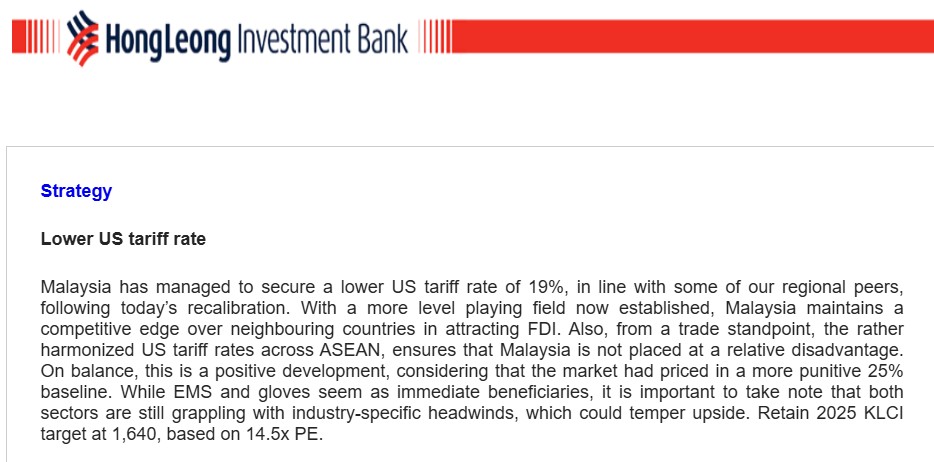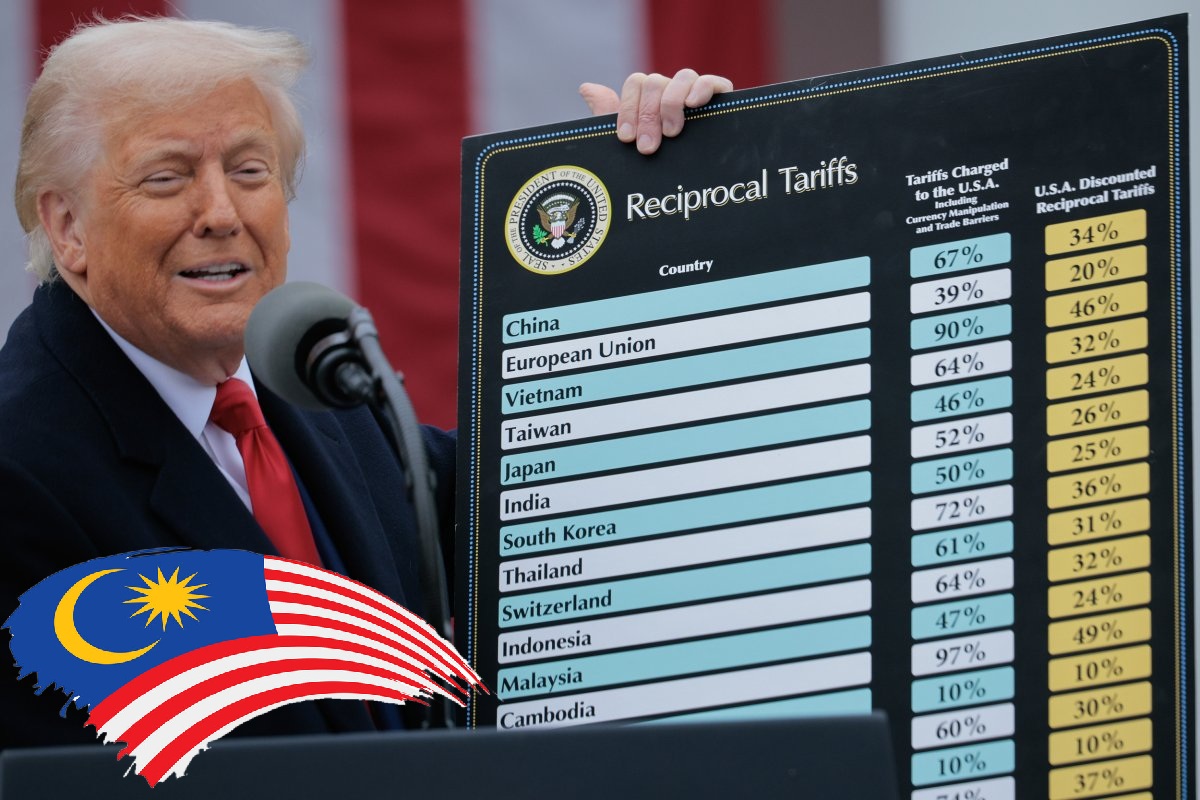THAT the 1,500-point level has for the longest of time serve as the psychological cushion for the FBM KLCI may change after Malaysia will now face a 19% tariff on exports to the US from 25% previously under an executive order signed by US President Donald Trump.
The good news is certainly a welcome relief after the local bourse having languished in a rather directionless trading especially after Washington initially imposed a 24% reciprocal tariff on Malaysia only to raise it to 25% on a 90-day pause that ended on July 8.
Reflecting the bullish sentiment which many local investors and punters hope is here to stay, the benchmark composite index has edged up as much as 1% or 16 points to trade between 1,519.17-1,530.31 at the time of writing.
If such momentum is sustainable, it will certainly lift the Malaysian stock market from being the only under-performing ASEAN market as evident from the FBM KLCI being “negative in July, YTD (tear-to-date), one-year and five-year”.
“Malaysia is -1.3% in July, second worst in ASEAN and third in Asia (India the worst -2.9%),” observed finfluencer Azha Investing (@azha_investing) in his latest stock market post on X. “(In contrast), Thailand was up 14% July while Indonesia was +8%.”
If you think Malaysia stock market (KLCI) is underperforming – yep, you’re spot on.
•Msia is the only ASEAN market that’s negative July, YTD, 1yr and 5yrs.
•Msia is -1.3% in July, 2nd worst in ASEAN and 3rd in Asia (India the worst -2.9%).
•Thai up 14% July. Indo +8%. pic.twitter.com/hnrLD52Jg9
— Azha Investing (@azha_investing) July 31, 2025
Will the relief be short-lived?
For the record, the latest tariff structure takes effect in seven days (Aug 8) and applies to goods entering the US for consumption with limited exceptions for shipments already in transit.
Signed yesterday (July 31), the order amends Executive Order 14257 and imposes revised ad valorem duties on multiple trading partners, including all major ASEAN nations.
Under the latest tariff list, Malaysia, Thailand, Indonesia, the Philippines and Cambodia each face a 19% rate.
Elsewhere, Vietnam faces a 20% tariff while Brunei is listed at 25%. Laos and Myanmar are hit with the highest rate at 40%. Singapore is not included in the latest round of adjustments.

In its earlier market outlook for today (Aug 1), Berjaya Research (previously Inter-Pacific Research) expects the latest tariff review to bode well for the Malaysian economy and stock market “as it offers a relatively competitive position compared to higher global tariff regimes”.
“The moderation of the tariff level supports domestic industries while maintaining openness to trade, potentially attracting foreign investment and boosting investor confidence,” projected the research house.
“We reckon that bargain hunting may emerge following clarity over the tariff rates which are seen as mildly positive and could spur the key index higher to its immediate resistance at 1,540 points, followed by 1,550 points.”
Given that foreign funds offloaded RM85 mil worth of Malaysian equities alone yesterday (July 31), it is hoped that the positive tariff review would boost foreign shareholding in Malaysian equities which has fallen to its lowest level since 2010 with a decline to 19% in June.
According to data compiled by CIMB Securities, the drop followed a net sell-off of RM1.3 bil by foreign investors during the month, reversing their net buying position in May.
Similarly, RM69.2 bil in foreign funds have exited Bursa Malaysia since 2018 with RM19.3 bil leaving under the current Madani administration. – Aug 1, 2025




